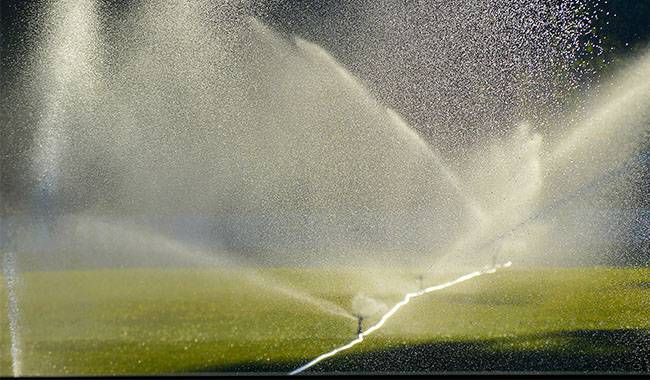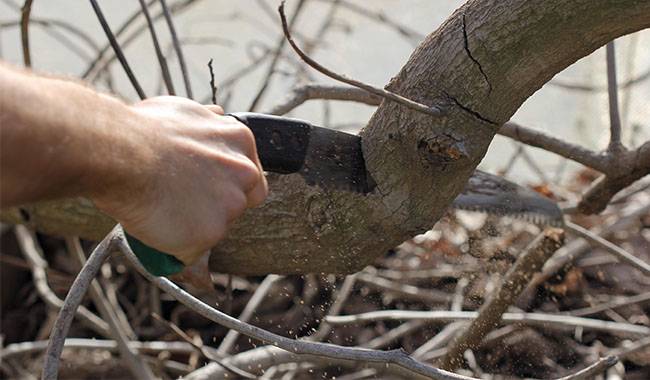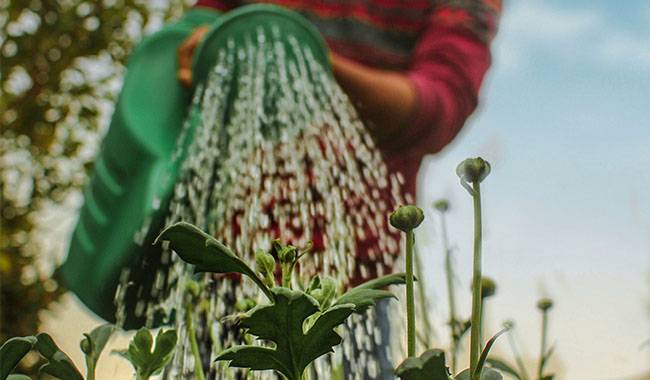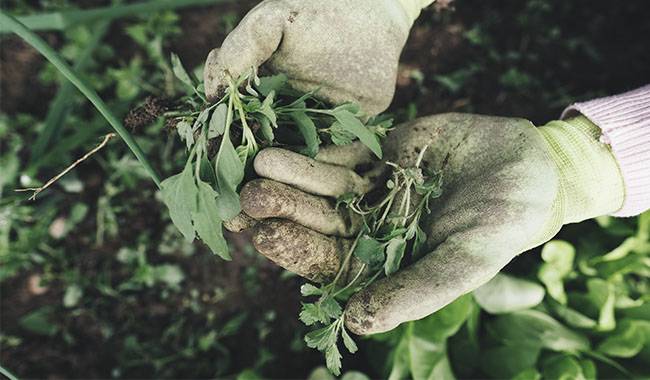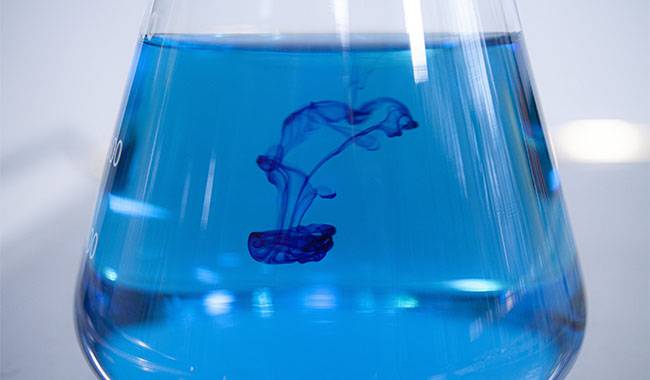
Like many great discoveries, the use of copper sulfate to treat plants was achieved by chance. The positive effects of copper compounds on plants, in this case, potatoes, were first noticed in Ireland. Due to then-unknown diseases, especially in wet weather, the potato crop died everywhere, and only in the vicinity of the copper compound on the plant did the crop continues to grow normally. Observant gardeners began to apply the waste products of copper production in the treatment of this crop to save the crop from the harsh Irish weather.
The second chance encounter with the results of a chemical reaction between copper sulfate and lime occurred in the late 19th century in the French province of Bordeaux (French: [bɔʁdo]). Fighting against the mold that was radically destroying the vineyards, a winegrower hesitated to throw away the remnants of the copper sulfate and lime solution he used to treat the bushes, pouring them into a container and spraying them on the grapes. The results were very favorable.
With the lightness of the vine, the observations of the Irish gardener, and the persistence of the French botanist P. Millard, an ingeniously simple but effective tool emerged to combat almost all diseases of vegetable and horticultural crops. the number of diseases from which the Bordeaux mixture protects plants against is about 25. The main ones are infectious diseases of fun Gal and bacterial nature.
HOW TO AVOID MISTAKES WHEN PREPARING BORDEAUX MIXTURE?
Copper sulfate and lime have been used for over a century to prepare a solution called Bordeaux mixture. No negative comments have been received about this treatment option, which has been used successfully on both an industrial scale and on private farms.
In the interest of fairness, it should be noted that it is not uncommon to see notes about inefficiencies or, conversely, about crops being burned to death. Why is this the case?
Most likely, during the preparation of the Bordeaux mixture, the following mistakes were made.
- The ratio of the components is incorrect.
- Each component was incorrectly diluted.
- The components were incorrectly combined into a single solution.
- Inadvertently or through ignorance, organophosphorus, carbophos, and other alkaline or acidic agents incompatible with Bordeaux mixture are added to the tank mixture.
WHAT DO I NEED TO KNOW TO USE THE BORDEAUX MIXTURE PROPERLY?
When purchasing a ready-to-use mixture for making Bordeaux mixture, pay attention to the label and ask the seller what is on the label.
Sometimes the label says the formula CuSO₄ without an explanation. As you know, copper sulfate is a white substance. Copper sulfate is a blue or bluish, water-soluble substance. The formula of copper sulfate is different and it is expressed as CuSO₄*5H2O in pentahydrate. The color is not visible in the dense packaging and there is no verbal written explanation on the label.
It is not known what the second bag contains. All that is written in the designation – lime. What kind of lime? It must be stated whether it has been ground. It should be written: lump lime, ground lime, or boiling powder. If it is written as lime powder, it means that the lime was extinguished. The desired lime milk can be obtained by diluting the lime powder with an excess of water.
In order to obtain a good quality Bordeaux mixture, lime milk is prepared from fresh quenched lime. For this reason, they often write lime on the label, implying (you guessed it) the quicklime to be quenched.
It should be taken into account that when preparing Bordeaux mixture from quicklime, the mass (weight) of the latter should be greater than the mass of copper alum. This is due to the presence of insoluble impurities in the initial material, or to the poor quality of the quicklime due to its long-term storage under unsuitable conditions.
If the lime powder is of good quality and freshly prepared, the weight ratio of the components is 1:1. It is the lack of confidence in the quality of this component that can explain the predominance of the lime content on the labels of the mixtures sold.
PROPER PREPARATION OF BORDEAUX MIXTURE
A brief overview of the components of the Bordeaux mixture
Bordeaux mixture consists of 2 components.
Copper sulfate salt, also known as copper sulfate. Copper sulfate or copper sulfate crystals hydrate (pentahydrate) (CuSO₄*5H2O). This substance is represented by blue-blue crystals that dissolve easily in water, obtaining an acidic medium (pH <7).
It should not be confused with copper sulfate. Copper sulfate (CuSO₄) is a colorless chemical that is hygroscopic and readily forms blue or bluish crystalline hydrates. Crystalline hydrates are readily soluble in water.
Calcium oxide, or quicklime, is a basic oxide. Its chemical formula is CaO.
In the preparation of the Bordeaux mixture liquid, the third component is water.
Calcium oxide (CaO) reacts violently with water. As a result, calcium hydroxide Ca(OH)2 is formed and heat is released. This reaction is known as lime quenching.
Calcium hydroxide is known as slaked lime or quicklime. The substance is a strong base, so its solution has an alkaline reaction. Lime powder is a white powder that is insoluble in water. When mixed with a large amount of water to form a suspension or suspension of calcium hydroxide in water, it is known at home as lail of lime.
PREPARATION OF UTENSILS AND OTHER PREPARATIONS
In order to prepare the liquid for the Bordeaux mixture, it is necessary to prepare enameled, free of chips and cracks containers, wooden, glass, clay. It is not recommended to use plastic, iron, or aluminum vessels. During the dissolution process, the reaction releases a lot of heat (lime quenching) and an acidic solution is formed, which may react with Galvanized or iron vessels (with the dissolution of copper sulfate).
To dissolve the components of the Bordeaux mixture are required.
- 2 barrels of 1.3 Gal and 2.5 Gal.
- A piece of gauze and a sieve to filter the solutions.
- A wooden stick to stir these solutions.
- Litmus paper or iron nails to determine the neutrality of the prepared solutions.
- A kitchen scale if preparing the Bordeaux mixture independently.
STEP-BY-STEP INSTRUCTIONS FOR THE PREPARATION OF BORDEAUX MIXTURE
In the stores, you can buy ready-made mixtures with quicklime (CaO) and copper alum (CuSO₄*5H2O) packed separately in bags. It is necessary to explain to the seller which ingredients are contained in the sold mixture.
Dissolving copper sulfate
- Pour 0.25-0.5 Gal of hot water into a 1.3 Gal bucket of water.
- Gently pour in a bag or a weight measure of copper sulfate.
- Stir well with a wooden stick until dissolved.
- Pour up to 1.3 Gal of cold water into the solution, stirring all the time.
Table 1 shows the weight measurements for the preparation of the Bordeaux mixture with different percentage concentrations using quicklime and slaked lime.
Set aside the prepared copper sulfate solution. If interested, you can use graded litmus paper to determine the acidity of the solution (it must be less than 7 units).
We proceed to prepare the lime milk (slaked lime solution). Slaked lime is a strong base and it has an alkaline reaction. When combined with the solution, the slaked lime neutralizes the acidity of the copper sulfate solution. If this procedure is not done properly, the plants will be burned during the treatment and may even die (especially the young plants).
Quenched lime
- Pour 0.5 Gal of cold water (not hot water) into a 2.5 Gal enameled bucket.
- Pour in a quantity of quicklime.
- Stir thoroughly while quenching.
- If using quicklime, prepare only a solution of appropriate concentration (Table 1).
- At the end of the reaction, slaked lime or calcium hydroxide Ca(OH)2 is formed.
- Pour 0.8 Gal of cold water into the cooled slaked lime solution while stirring; there should be a total of 1.3 Gal of lime milk.
Table 1. Weight quantities of the components for the formulation of 2.5 Gal Bordeaux mixture
| Components per 2.5 Gal, (in grams) | |||
| Concentration. (in %) | Copper sulfate (CuSO₄*5H2O) | Slaked lime (Ca(OH)2) | Burnt lime (CaO) |
| 0.5 – 0.7 | 50 | 75 | 100 |
| 1.0 | 100 | 100 | 150 |
| 2.0 | 200 | 250 | 300 |
| 3.0 | 300 | 400 | 450 |
| 5.0 | 500 | 600 | 650 |
Note! All precautions must be taken as the lime fire extinguishing reaction generates heat. Hot lime drops will be splashed. Protect your eyes and hands.
Let’s start mixing the solutions
- The two solutions must be cold before mixing.
- From a 1.3 Gal bucket, pour a fine stream of copper sulfate solution into the lime milk solution with constant stirring (not the other way around).
- We get 2.5 Gal of a mixture of the 2 solutions.
- Check the acidity. If the bordering liquid solution is prepared correctly, the nail immersed in it will not be covered with copper spots and the litmus paper will show 7 units.
If the bordering liquid solution is acidic, neutralize it with lime milk (prepared separately) to bring it to a neutral pH of 7-7.2.
During the additional deoxidation of the prepared solution, it is already possible to pour the lime milk into the Bordeaux mixture, but still in a fine stream, while stirring constantly with a wooden stick.
Caution! To avoid unnecessary dilution of the solution with water, the additionally prepared lime milk must be of 10-15% concentration.
The resulting neutral solution of Bordeaux mixture is filtered through a fine sieve or gauze folded into 4-5 layers.
The prepared Bordeaux mixture should not be stored for a long time. The prepared solution settles for 1 to 3 hours and then is treated vegetatively.
The remaining Bordeaux mixture can be stored for no more than 24 hours by adding 5-10 g of sugar to a 2.5 Gal solution.
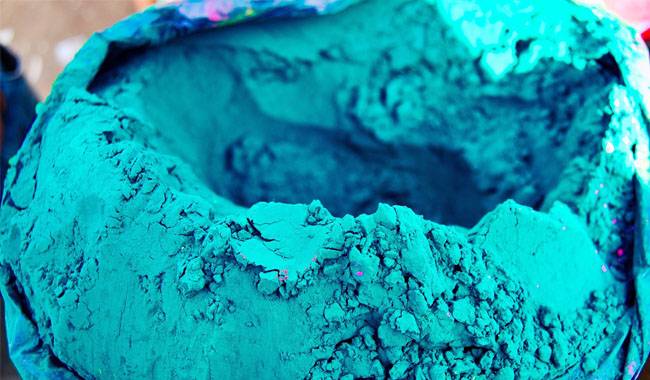
PRINCIPLE OF ACTION OF BORDEAUX MIXTURE
Copper sulfate solution is a fungicide. The solution is in good contact with plant organs (leaves, bark). A properly prepared solution is practically not washed away by rain.
The copper compounds in the Bordeaux mixture are insoluble in water and precipitate as tiny crystals on the leaves and stems of plants during spraying. The copper ions destroy the protective shell of the spores and the fungus itself. The fungus dies. The active action of copper on trees and shrubs softens the lime solution of the drug and at the same time, it acts as a sticker.
The efficiency of the Bordeaux mixture increases with finely dispersed spraying of plants.
The duration of action of the fungicide is up to 1 month. Effective suppression of pathogens of fungal-microbial pathogenic microbiota.
BE CAREFUL!
- Large drops of Bordeaux mixture are phytotoxic to plants, especially during the vegetative stage.
- Bordeaux mixture dripping from leaves onto the soil can promote the accumulation of copper therein, negatively affecting growing crops (causing leaf and ovary abscission).
- Repeated use of Bordeaux mixture without following the recommended terms of plant treatment during vegetation can lead to plant death.
- Adding soap to the Bordeaux mixture is pointless. Its addition will only reduce the contact with the plants.
- Bordeaux mixture is not compatible with canned mixtures of other preparations. Colloidal sulfur is an exception.
PERIOD OF PLANT TREATMENT WITH BORDEAUX MIXTURE
- 2-3% concentration of Bordeaux mixture can be used for spraying perennial fruit crops.
- Before flower buds bloom (tentatively in February-March).
- In late autumn after the leaves have completely fallen (tentatively in October-early November).
- During vegetation, from the green cone stage of perennial crops and from the planting of vegetable plants, spraying with a 1-0.5% solution according to recommendations.
- Non-preventive treatment of plants in case of obvious diseases due to weather conditions and epiphytic infections.
PROTECTION OF PLANTS FROM DISEASES BY BORDEAUX MIXTURE
When treating plants, copper in Bordeaux mixture is a poison for fungal diseases, while lime is a neutralizer that relieves acid burns on plants.
A list of crops and diseases is provided in Table 2. The main stages of the Bordeaux mixture treatment are described. A more detailed description of the diseases and protection measures can be found on the relevant website.
Table 2. Disease protection of horticultural and vegetable crops with Bordeaux mixture
| Perennial fruit crops | ||
| Crop type | Disease | Duration of treatment |
| Seed crops: pear, apple, quince | Fruit rot, leaf rust, scab, phytophthora, moniliasis, black cancer, powdery mildew, leaf spot. Treat plants with Bordeaux mixture at 3% before the start of vegetation and after complete leaf drop in spring. | During vegetation: spray plants with 1% Bordeaux mixture at the germination stage and after flowering. The rest of the time – as needed. Stop treatment 2 weeks before harvest. |
| Drupe fruits: cherries, carrion, plums, cherry plums, peaches, apricots | Cockscomb disease, leaf curl, moniliform fungus, kraut fungus. Treat plants with 3% Bordeaux mixture in spring before vegetation starts and after complete leaf drop. | Switch to 1% Bordeaux mixture for spraying from the bud-blooming stage to the early flowering stage, when the ovary starts to grow. Apricots and cherries were highly sensitive to Bordeaux mixture (deformation and cracking of fruits were observed). It is best to treat them with 0.5% Bordeaux mixture. Stop treatment 2 weeks before harvest. |
| Berry crops | ||
| Crop type | Disease | Duration of treatment |
| Grapes | Downy mildew (false powdery mildew), anthracnose, black rot, rubella, cercospora, black spot. | Buds should be treated with Bordeaux mixture once in 2-3 weeks during the leaf roll stage and vegetative period to prevent other concomitant infections. |
| Gooseberry, raspberry, currant, blackberry, strawberry, strawberry | leaf spot, leaf rust, anthracnose, septoria and black rot. | The vegetative period of berries is short, therefore, 2-3 treatments with 1% Bordeaux mixture are necessary before and during the flowering season. The third treatment is mostly applied after harvest. |
| Major horticultural crops | ||
| Crop type | Disease | Duration of treatment |
| Cucumber, zucchini, squash, beans, tomatoes, cabbage, onions, garlic, peppers, eggplant, potatoes | True and false powdery mildew, root and root rot of seedlings and adult plants, fusarium wilt, anthracnose, phytophthora. | Seedless vegetable crops are first sprayed with Bordeaux mixture to prevent fungal diseases in the bulk germination stage. The second spraying is done when 2-3 true leaves are unfolded. The first Bordeaux mixture spray was applied to seedlings within 2 weeks after planting. For vegetative treatments, 0.5-1% of Bordeaux mixture was used. In the subsequent vegetative period, spraying with Bordeaux mixture is done according to the recommendations, at the first manifestations of the disease. |
CONCLUSION
Dear readers
The article focuses on the correct formulation of the Bordeaux mixture, depending on the effectiveness of the drug against fungal diseases of berries, garden and vegetable crops. More information on the application of Bordeaux mixture for plant protection, related to their development, formation, and harvest peculiarities, can be found in the article on specific plant care on our website.
More related information about Bordeaux mixture




